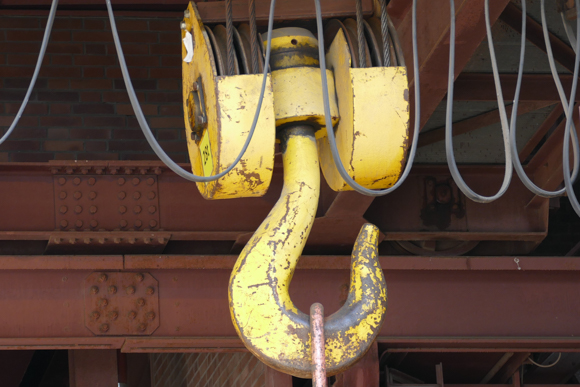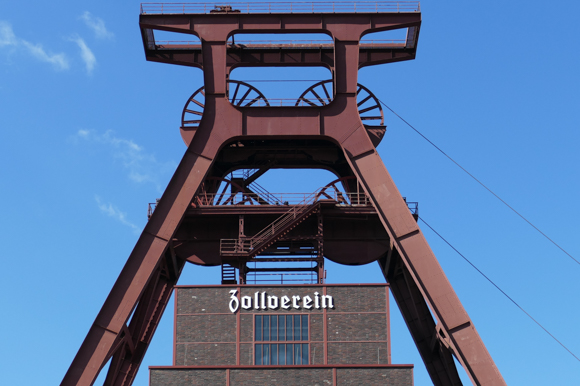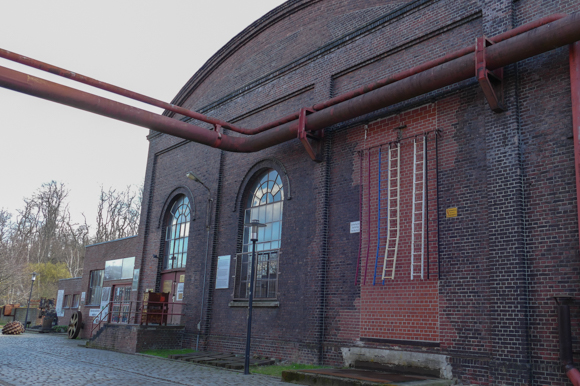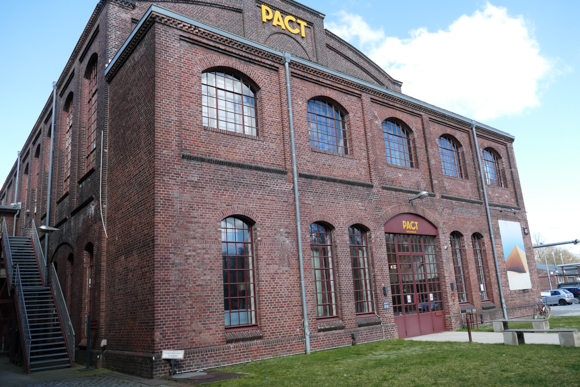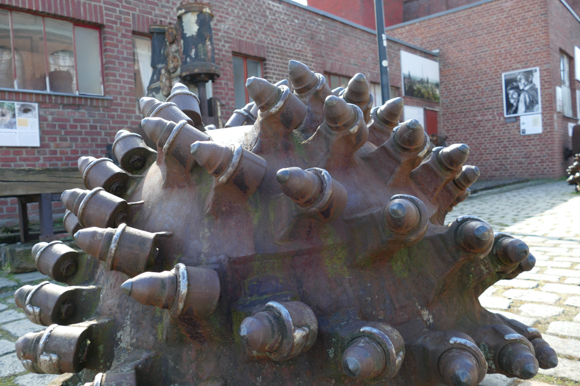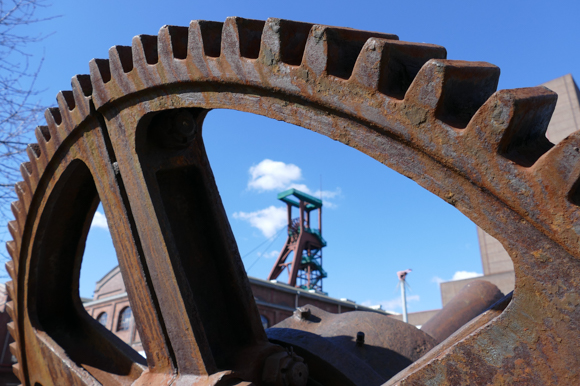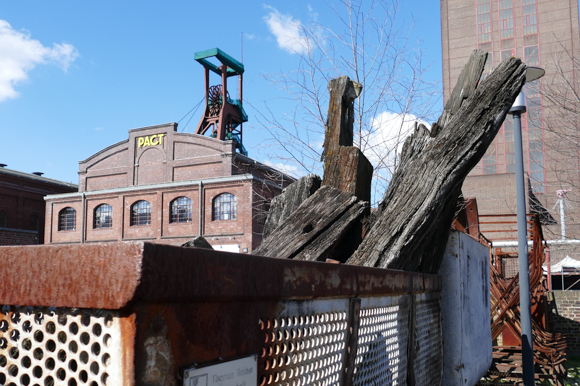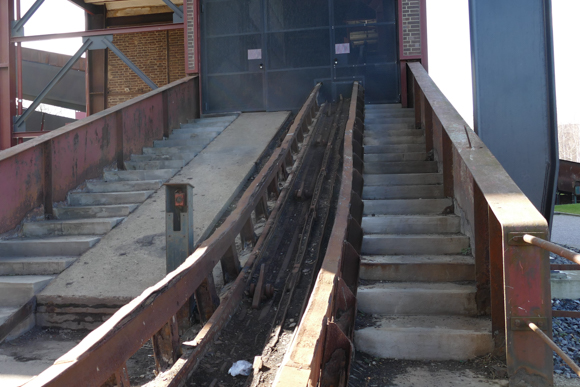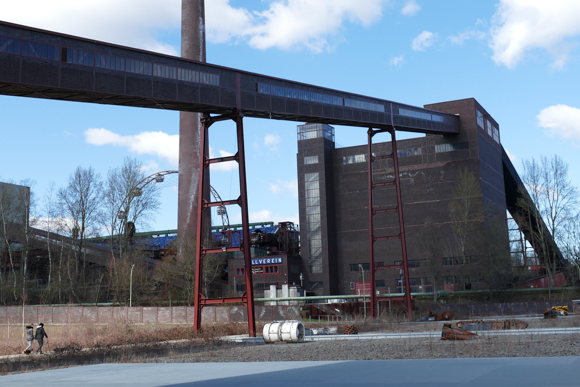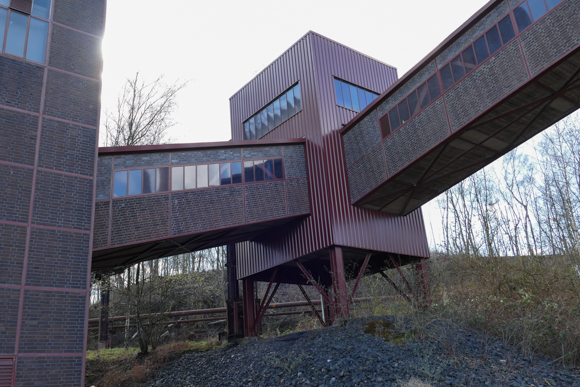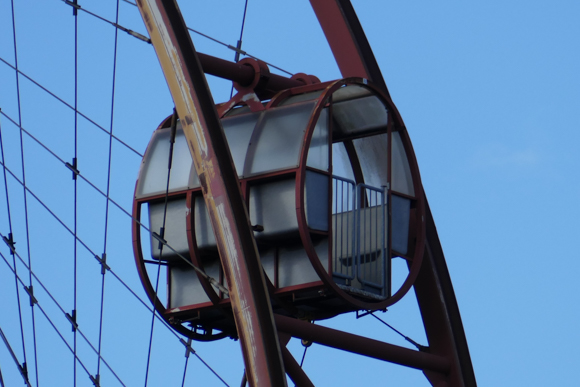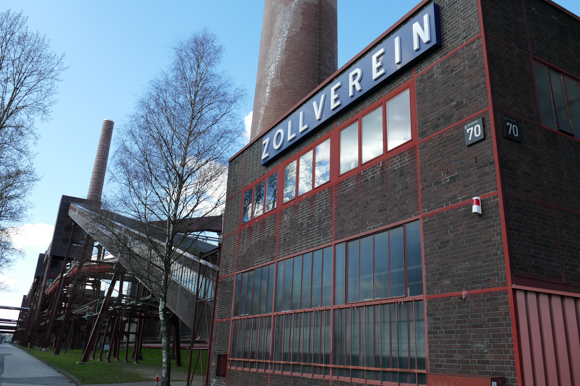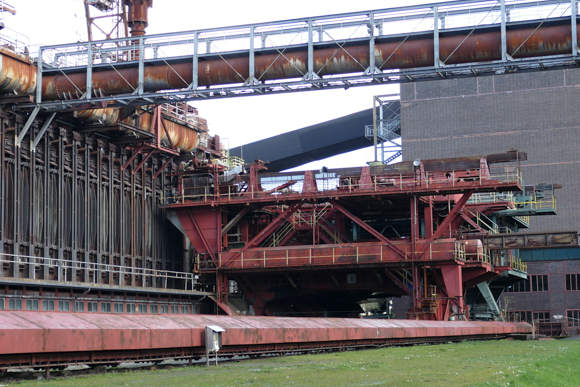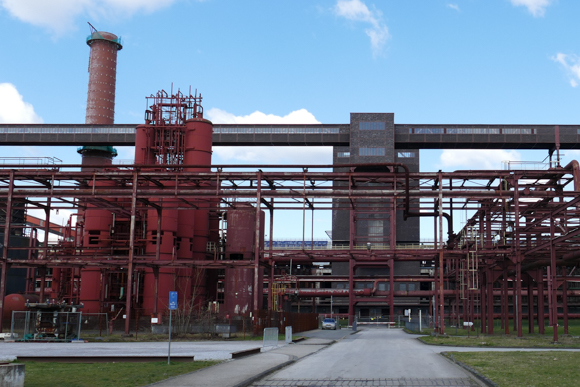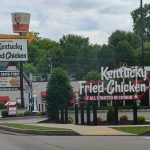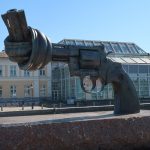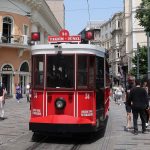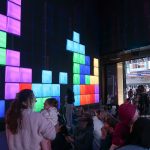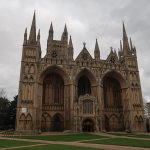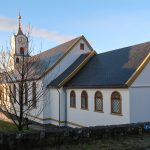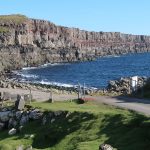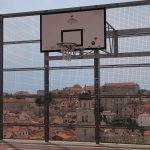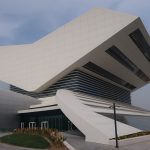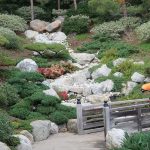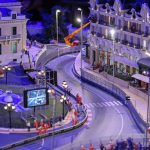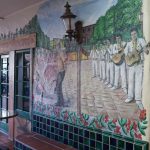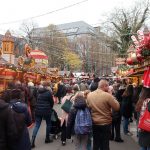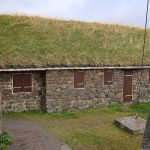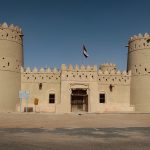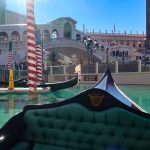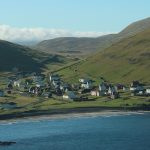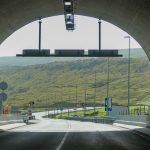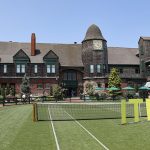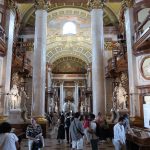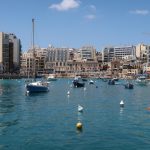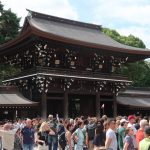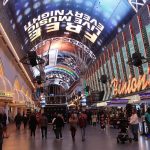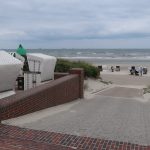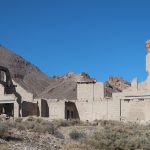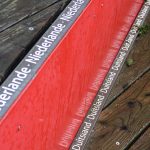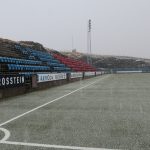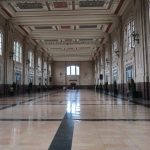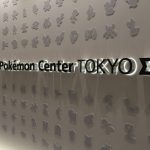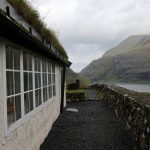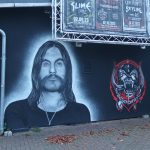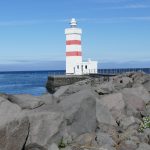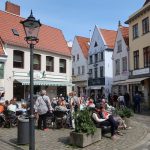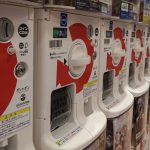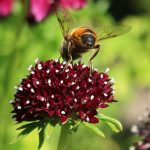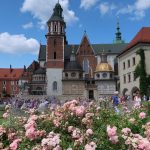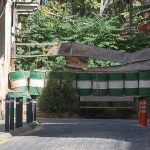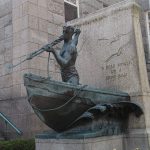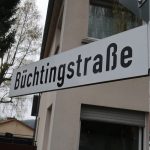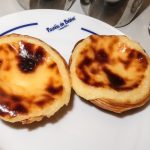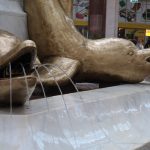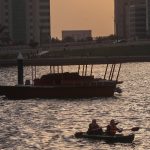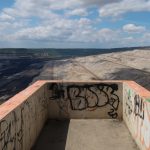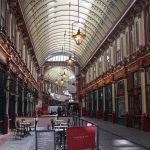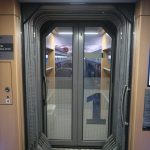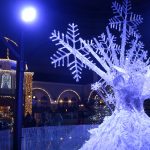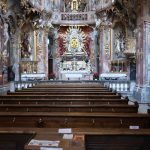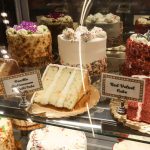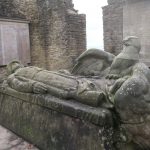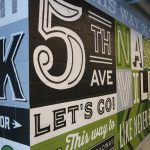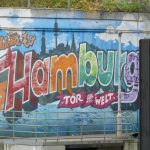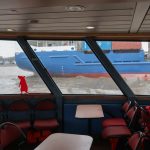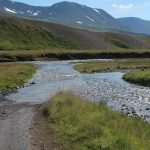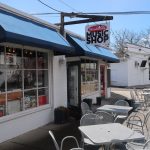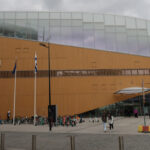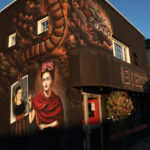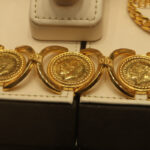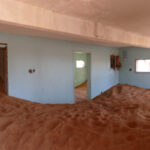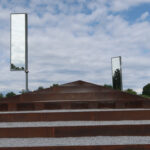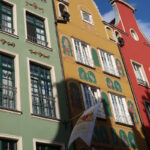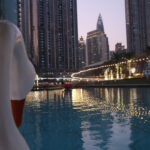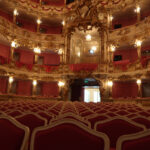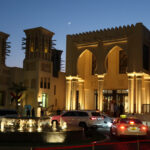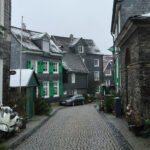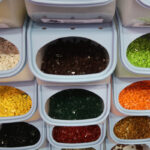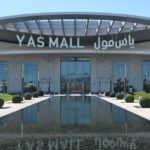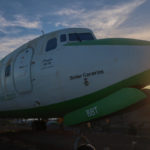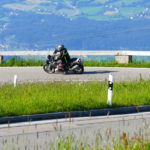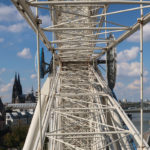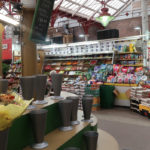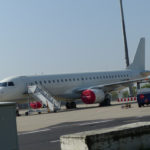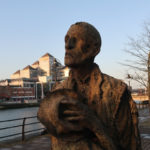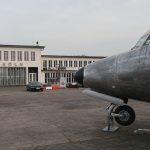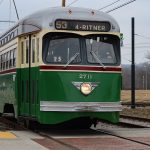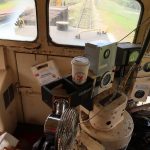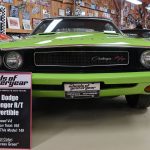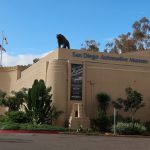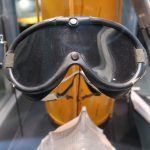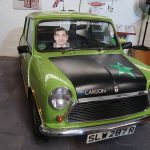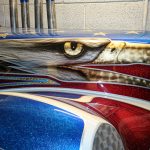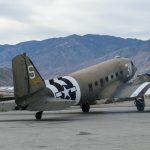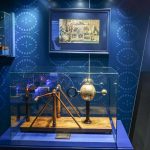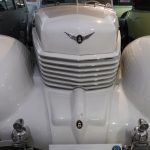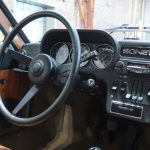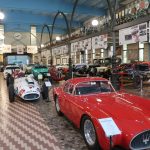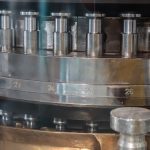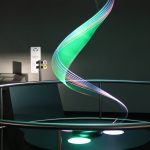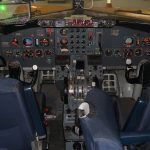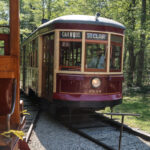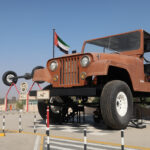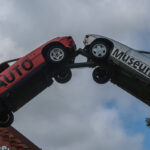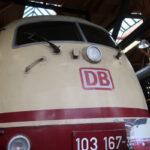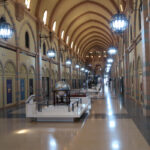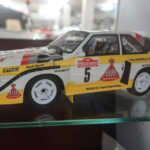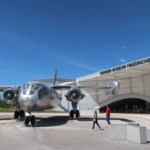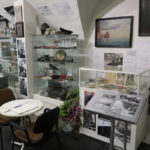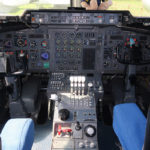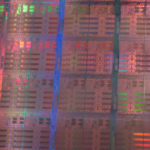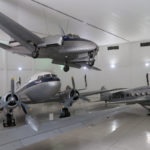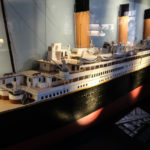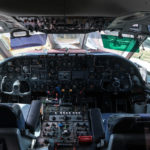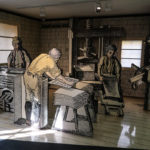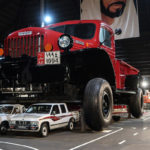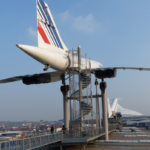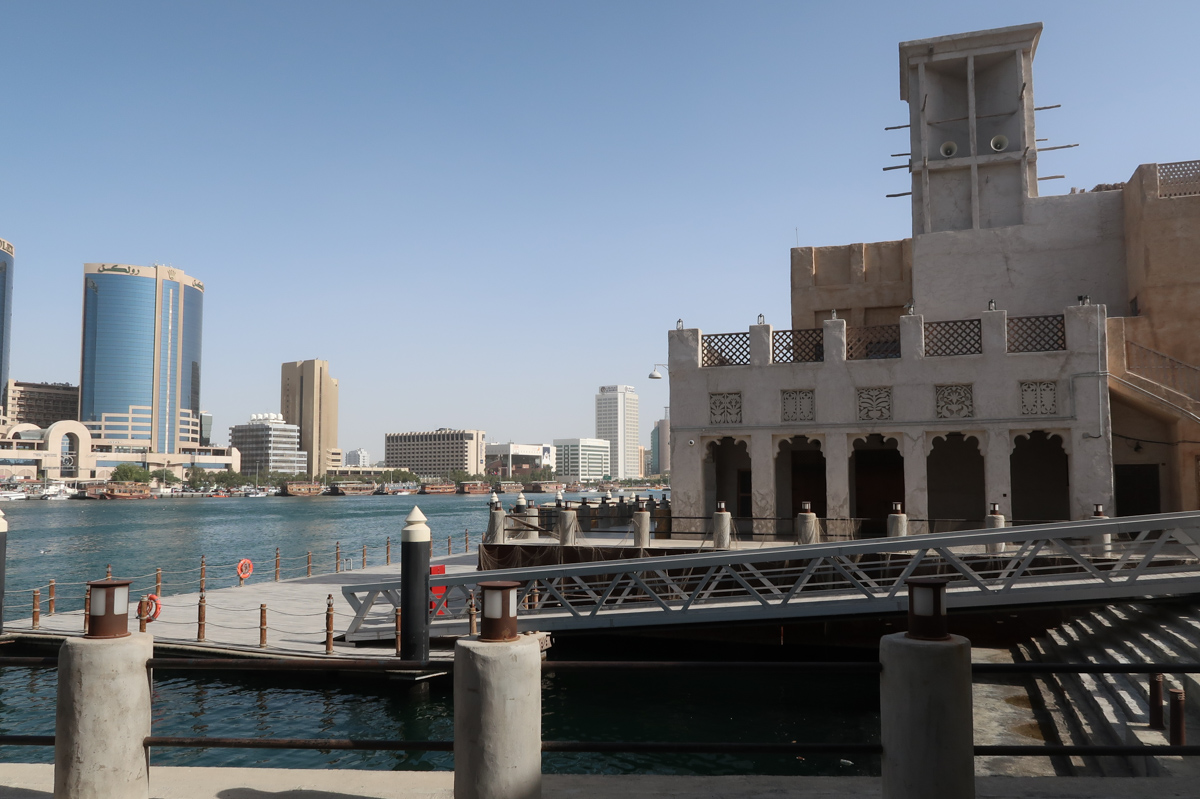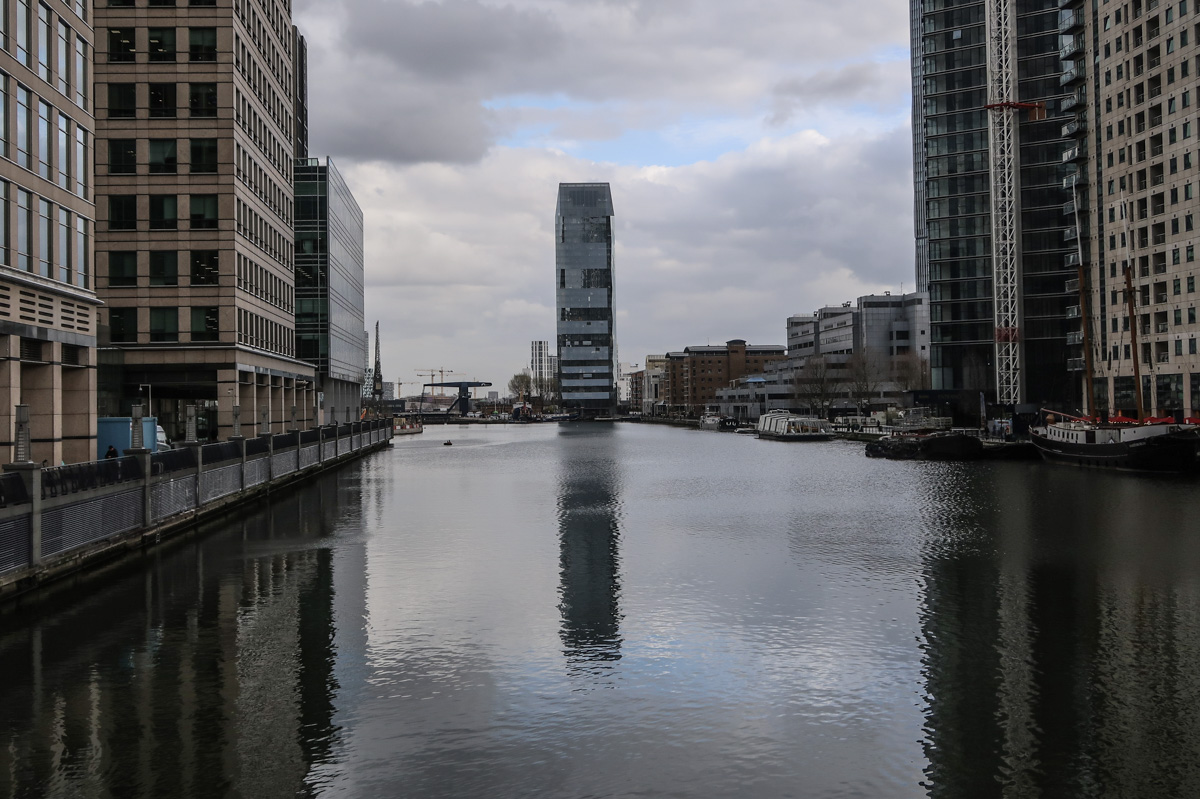If an industrial site is jokingly called the Eiffel Tower of the Ruhrgebiet Region, it seems to be quite an impressive landmark. In fact, the Zeche Zollverein made it from a mining area to a UNESCO World Heritage. It received that status in 2001. During a visit in early 2021, I took some daytime impressions of the area. Here is my Pictured Story, i.e. I am focusing on major size pictures rather than a lot of text and a rating.


Zeche Zollverein – Location & Transport
Zeche Zollverein is located in the Northeast of Essen, close to the city limits towards Gelsenkirchen. The former industrial site nowadays hosts a couple of museums and also companies. Two Zollverein museums I will feature on Flyctory.com soon is the Ruhr Museum and the Red Dot Design Museum. The borough in which the site is located is named Stoppenberg.
There are multiple parking lots on the Zollverein grounds – but in general, driving may be a bit of bothering. Local transport connection is quite good. Close to the Ruhr Museum, there is a tram stop Zollverein, which is featured by tram 107. The Kokerei area is connected by bus (stop: Essen Kokerei Zollverein, line 183). There is also a regional train station, Essen Zollverein Nord, from where you can either walk or take the 107 tram. The Zollverein area as such is accessible 24 hrs (apart from some parts of the Kokerei area). The museum and other attractions, of course, have opening hours.
Zeche Zollverein – History
Zeche Zollverein was a black coal mining area from 1851 to 1986. The name is related to the Deutscher Zollverein, the German Customs Union. Franz Haniel was the person who drove the construction of the site, after he found coal in 1834 in the Essen borough Schönebeck for the first time. The pit was steadily enlarged and finally took an area which is much larger than the Zollverein space you currently can see and visit. Major parts are nowadays hosting other businesses or residential areas. Shaft #12 was likely the most prominent, beautiful, but also highest capacity part of the whole mining area. In 1937, the mini produced 3.6 million (metric) tons in one year. At that time, there were roughly 7,000 employees. In the late 1960’s, the Ruhrkohle AG became the new carrier of Zollverein. Coal extraction in the region steadily decreased and Zollverein was finally closed in 1986. Two of the shafts, 2 and 12, are still active in order to pump water into the nearby river, the Emscher.
Impressions of Zeche Zollverein
I did not have the chance to have a tour inside the mining area, but the buildings are already quite impressive. I started my visit close to Schacht 12, which is likely one of the two most iconic places in the whole area. This is also where the two museums I mentioned are located.








I then strolled along to the East part of the mining area. This is also where the Folkwang University of Arts is located. It also hosts the theatre PACT and a museum.










After strolling through that area, I headed to the iconic Kokerei (cokery). Regarding industrial structures, this is likely the most impressive part of a walk through the Zollverein grounds (which is also a beauty in the night, when parts of the industrial sights are illuminated). You see a lot of industrial equipment from outside, even though parts of the area are closed. This area features an art gallery, an event space, a cafe, but also a swimming pool.











Here are some impressions of were I started. The whole walk around the area took me about one hour, which suited well between the (time slotted) visits in the Ruhr Museum and Red Dot Design Museum. The Zeche Zollverein rather recommends a walk along the rear of the cokery plant, for which I would add at least 30 minutes.





Flyctory.com Pictured Stories
The key contents of Flyctory.com Pictured Stories are the picture, not the text:

After I introduced you to Puddles Pity Party in my first Looking back to... posting from Weird Al Yankovic's Bigger & Weirder Tour ...

In the mid of June, on 20th and 21st June 2025. I visited the Weird Al Yankovic Bigger & Weirder Tour 2025 ...

It was a rather quiet and rather early Sunday morning on the tenth day of my Six US States and Nashville ...

At first sight, Corbin in Kentucky looks like a nice, rather small 9,000 people town. However, there are some hidden ...

Many of my trips to Copenhagen Airport (CPH) end up in an Öresundstag trip to Sweden and a night in ...

During my visits to the Faroe Islands, I have been to several of the rather remote villages. In this posting ...

A late May 2025 trip gave me at least a short opportunity to explore the Turkish city Istanbul. I felt ...

Immersive arts exhibitions are becoming more and more popular. I introduced you to the ARTE Museum in Dubai or the ...

In 1974, the former church St Mark's on North Audley Street in London has been deconsecrated. Nowadays, the centrally located place becomes ...

As much as Lordi is the band I featured the most in my album reviews, Miniatur Wunderland is taking some ...

The musical Rock of Ages brought me to multiple places in the United Kingdom. Quite many of them wouldn't have been in ...

One of the most iconic buildings in the Faroese capital Torshavn is indeed the Torshavn Cathedral. Named Havnar Kirkja ("Harbor ...

The Sadoyartunnilin (Sandoy Tunnel) offers much more efficient and faster travel to Sandoy in the South of the Faroe Islands. Thus, ...

Watching a friend's musical performance there brought me to Bad Säckingen in Southern Germany at the beginning of January 2025 ...

Dubrovik in Southern Croatia is one of the key touristic cities at the Adriatic Sea. It also became extremely popular ...

In 2022, Dubai has opened a new educational facility. The Mohammed bin Rashid Library has become one of the most ...

Balboa Park in San Diego has so many different museums and attractions in Stock. I already took you to the ...

I simply love the Miniatur Wunderland. You can hardly challenge that the scale model landscape and rail attraction is the ...

It is quite exactly one year ago since my wife and I visited San Diego for the second time. The ...

During the last twelve months, the Northern French city of Lille absolutely won my heart. Starting with the UEFA Conference ...

On a road trip through Italy in 2021, I ran into a song, which made me fall in love with ...

On a Sunday in mid-August 2024, I visited the Autostadt ("Car City" or "Motor City"). Located in Wolfsburg in Germany, ...

Spending some time in and around Munich Airport (MUC), I also took the opportunity to have their Airport-Live-Tour, the basic bus tour ...

The Faroese people call Skansin (liternally: the "redoubt") the most peaceful fort on Earth. In fact, the facility built in 1580 in ...

On my multi-stop drip from Germany to Jakarta in Indonesia, I had one free day on the outbound leg in ...

Recently, I fixed another trip to Las Vegas. Weird Al Yankovic will play multiple shows at the Venetian Theater in ...

The rather recently opened Sandoyartunnilin (Sandoy Tunnel) allowed me to travel to the Southern island of the Faroe Islands for ...

What's a good way to explore the permanent fun fair and entertainment area in Vienna, the Prater, if you are ...

When it comes to spectacular views over Paris, you typically think of Tour Montparnasse or the Eiffel Tower. However, the ...

On 21st December 2023, travel and commuting in the Faroe Islands reached another evolution. On that day, the Sandoyartunnilin (Sandoy Tunnel) ...

You just cannot visit Tokyo without being amazing by the Japanese love for gaming. So did my wife and I ...

After I already introduced you to the track events and the field events of the athletics meeting of the Heinz-Steyer-Stadion ...

Even though London is one of the foreign cities I visit most frequently, I haven't shared some travel experience with ...

Even though the Grand Central Terminal (or: Grand Central Station) in New York City is a popular touristic attraction, it ...

It's about a month until I am back t the Faroe Islands. This time, I am traveling quite a lot ...

The German Olympic Sports Confederation (Deutscher Olympischer Sportbund) hired a complete stadium for their events during the Paris 2024 Olympic ...

Apart from being ill, the week at the Infosys Hall of Fame Open 2024 in Newport, Rhode Island, has truly ...

I really loved having a prolonged weekend in Vienna in June 2024. There is such a nice variety of interesting ...

Almost 4,000 hotel rooms, located right at the Strip - the Caesars Palace is undoubtedly one of the most famous ...

The Mediterranen island Malta is becoming a more and more popular tourist destination. My wife and I had a brief ...

The flora of the Faroe Islands is rather unique and special. A nice way to explore it is the Faroese ...

The Wiener Zentralfriedhof (Vienna Central Cemetery) is the one of the largest cemeteries in Europe. With over 300,000 graves and three million ...

A visit to Japan would just not be complete without digging into the religion and visiting some temples and shrines ...

I feel that the more the Strip or Las Vegas Boulevard area is growing as a massive, but also expansive entertainment temple, ...

I rather frequently travel to Dublin for business reasons. However, the Weird Al Yankovic Tour 2023 gave me a rather ...

Especially in summer, East Frisia and the East Frisian Islands on the German North Sea coast are very popular tourist ...

Going back from Las Vegas to Los Angeles after the New Year's Eve celebrations, my wife and I opted to ...

During our visit to Dubrovnik, my wife and I also had a look into the Franciscan Monastery (sometimes also: Franciscan ...

The Selfkant is truly a remarkable municipality in the very West of the Federal Republic of Germany. The border to ...

During my trip to the Faroe Islands in December 2023, KI Klaksvik made me see my first match at the ...

According to Wikipedia, twelve different railroad lines overall operated from and through Kansas City overall. However, the golden age of ...

As one of the first posting emerging from my September and October 2023 to Tokyo, I already introduced you to ...

KI Klaksvik's UEFA Conference League campaign in 2023 made me have a December visit to the Faroe Islands. Apart from ...

In New Year's Eve in 2013, my wife and I married in Las Vegas. We wanted the New Year's fireworks ...

When the Faroe Islands opened the Vagatunnilin, the Vagar Tunnel, in 2002, ,it was a revolution in their infrastructure. The almost ...

Winter and Christmas time is typically also a very spiritual and religious times of the year. Why not taking you ...

Last year, I had a longer weekend to Andorra. I still love to think back to the lovely time I ...

During my trip to the Faroe Islands, I did a couple of short road trips, typically to slightly more remote ...

Wacken could be just a normal village on the countryside of the German state of Schleswig-Hostein. However, when you mention the ...

The recent seismic and volcanic actions on the Reykjanes peninsula really touch me. Dung the last years, Iceland has more ...

The musical Rock of Ages lead me to several places, especially while chasing the U.K. Tour. In fall 2022, I had ...

The two world wars have caused significant damage to most German cities - especially those with a somehow-strategical meaning. Thus, ...

I recently introduced you to the Geothermal Exhibition at the Hellisheidi Power Plant. Due to the high geophysical activity in ...

One thing I was looking forward a lot during our recent trip to Japan were vending machines. We did not ...

The are numerous and spectacular waterfalls in Iceland, spread all over the island. However, the Seljalandsfoss is one of the ...

One thing about tour-chasing is that it leads to several places in a rather short time. The Weird Al Yankovic ...

Lillehammer - the small Norwegian city, which became globally known in 1994, when it hosted the Olympic Winter Games. In ...

The blue and white flag was waving at quite a lot of houses and the (league) jersey was proudly presented ...

Copenhagen is definitely one of the most beautiful spots in Europe. One of the most iconic places of the city ...

After I already took you to the "public" area of Wawel Castle in Krakow in a Pictured Story, here is ...

The Old Market Hall (Vanha Kauppahalli or - in Swedish - Helsingfors Gamla Saluhall) is one of the most iconic ...

There is typically not too many religious contents on Flyctory.com. However, this posting is already the second church I introduce ...

The Wawel Royal Castle is likely the most iconic piece of architecture in Krakow. The castle is located above the ...

During the last years, I traveled to quite some places in the United Kingdom, which I likely wouldn't normally have ...

The much I loved Cyprus (and also the capital), the much visiting Nicosia has been depressing to me. Having all ...

I recently took you to Husavik, somehow Iceland's capital of whale watching nowadays and whaling in previous ages. New Bedford ...

When I look back at five years of tour-chasing the British cast of the musical Rock of Ages since 2018, ...

I have to give in, that is not a normal posting. I felt that with any major anniversary for Flyctory.com, ...

The black lava beaches of Iceland are one of the must visits to many tourists. One of the most well-known ...

Yeah, there are plenty of fantastic kinds of food made in Portugal. Think about different fish dishes, sweets - or ...

Shopping Malls are not that frequently presented on Flyctory.com. There are some exceptions like my posting about the Ibn Battuta ...

Visiting the Old Town of the capital city of Valletta is definitely one of the highlights of a trip to ...

I have to give in: the red carpet is not my favorite location. Nonetheless, I felt very thankful that after ...

Already in 2018, I introduced you to my thoughts about Manchester Airport (MAN). To sum it up: the airport has ...

When you pass North Huntingdon Southeast of Pittsburgh on the US-30, it feels like a very typical American city at ...

Palma Cathedral - or Catedral de Mallorca - is definitely one of the most iconic buildings in Palma. Of course, I did ...

Shall I do a review or a Pictured Story out of this place? I finally opted for the latter option ...

While I generally enjoy being in the United Arab Emirates due to climate and cultural diversity, I especially have a ...

I felt that the current discussions about the closing down of the village of Lützerrath in Germany are a good ...

Leadenhall Market is one of the most beautiful markets in London. The covered market in Central London has been initially ...

A trip to a Frequent Flyer meeting lead to a post about train rides: Less than two weeks after the ...

The German amusement park Phantasialand is regularly rated to be one of the best and especially most atmospheric spots of ...

Asam Church in Munich is regarded to be the most beautiful church in the Bavarian capital. Thus, on one of ...

Just two weekends before Christmas 2022, I have been to Tirana for the very first time. I was aiming to ...

Once upon a time there was an above-average bakery in Hoboken, New Jersey, right on the opposite site of the ...

My early October 2022 trip to Cyprus gave me a lot of great impressions - and I really started to ...

Many tourist traveling to Iceland put the day trip of the Golden Circle on the top of their list. Apart from ...

The Hohensyburg castle is located at a height of 245 meters above sea level in Southern Dortmund in Germany. While the castle ...

I typically miss when theaters offer tours during the time I have a booking for my favorite musical, Rock of ...

I guess there is a lot of things you think about when you think about Nashville. Country music, partying, honky-tonks, ...

In the order of posting the episodes of my trip report of exploring Hamburg Habor (here is my overview posting ...

This episode of my Hamburg Public Ferry trip report takes you to my favorite route of all, Line 73 (see ...

The second posting about exploring Hamburg with the HADAG public ferries features Line 72, which is special in multiple aspects ...

Typically, my Trip Reports are like travel diaries. One posting per day, telling you all the stories of a trip, ...

If you follow Flyctory.com for a while, you know that I love the Northern Icelandic city of Akureyri. This posting ...

While Dubai and Abu Dhabi already attract masses of tourists, the North and East of the United Arab Emirates is ...

3,337 Waffle Houses Away in the little town of Paola, Kansas - I have heard these words so often. They ...

It's summer season in Iceland right now again. People explore the amazing highlands. While I still struggle to complete a ...

After I recently took you to Bethel Woods, the grounds of the legendary Woodstock Music Festival, in fact taking you ...

During my summer 2021 daytrip to Helgoland, I also needed the Dünenfähre ("Dune Ferry") to connect from the main island to the ...

Going to Pittsburgh is always very special to me. Typically, this means that there is a home match of my ...

Akureyrarkirkja or simply the Akureyri Church is one of the key eyecatchers of the Northern Icelandic city. The Lutheran church, ...

When you think about libraries worth visiting as a tourist, you likely thing about historic places with old books. Helsinki, ...

During my September 2021 trip to Toronto, I also spent an evening at the beautiful historic district of Streetsville. The ...

Greetsiel is one of the popular villages in East Frisia, right at North Sea. Especially the picturesque harbor area is ...

For many Dubai tourists, especially first-timers, walking through the narrow streets of the Old Town and passing tons of jewelry ...

The abandoned settlement part of Al Madam in the East parts of the Emirate of Sharjah has become a hidden ...

I have to agree: if it comes to arts, especially modern arts, I am a real low-brow. You won't find ...

Due to its very good strategic location at the Baltic Sea, Gdansk has been an important settlement at least since ...

Especially for tourists, Dubai rather means entertainment, luxury and posh shopping. Thus, having a boat ride in a swan-shaped pedal ...

Especially when I am in London, visiting a stage play is always a must on my list (time permitting). One ...

The area around the world famous seven star hotel Burj al Arab (if someone is paying me a night there, ...

In order to collect some new material for Flyctory.com, I recently drove to Remscheid to cover some museums there. The ...

ByWard Market in Ottawa is a beautiful entertainment, shopping and relax district in the heart of the Canadian capital. During ...

What is your first thought about Iceland? I think many people associate the stunning, unique nature with the Nordic island ...

Seljalandsfoss, Skogafoss or Gullfoss - Iceland is full of very famous waterfalls. Urridafoss (which translates to "Sea Trout Waterfall") is ...

Hverir is one of the most popular geothermal areas in Northern Iceland. Two the key drivers is obviously that it ...

When I told a colleague I will be in Krakow in late August 2021, his reaction was "Is it still ...

What is the shortest flight time between Canada and the European Union? Can you walk from the USA to Russia? ...

The Pictured Story postings give me a nice opportunity to share moments with you, which might not be worth a proper review ...

More than 5,000 small buckets one next to another in a bunch of aisles within one store. The contents: interlocking ...

15 meters of total height, thereof a the height of the light itself at eleven meters - the Pilsum Light ...

Due to their high incidences on the delta variant of Covid-19, the United Kingdom is still / again in the ...

During my recent daytrip to Berlin, I took the opportunity to have a walk through sunny - and empty - ...

I have always been wondering how people from cities like Lockerbie or Lakehurst deal with the faith that their hometown ...

Travelling in Germany has been turned down to an absolute minimum. Hotels are just able to accept business guests and ...

While the Ibn Battuta Mall is my definite shopping favorite in Dubai, my love about spending some money in Abu ...

During my December 2020 trip to Dubai, I stayed in two hotels in the Al Seef district. The area is ...

Not too rarely, you find the Paseo de Canarias in Firgas as a cover photo of Gran Canaria / Grand Canary ...

Before the pandemic limitations, One New Change Mall in London has been a really popular place. First of all, it ...

The Canary Islands have not only been a key hub for maritime travels (Gran Canaria has, for example, been a ...

I assue that there is hardly any travel guide for London, which is mentioning the Namco Funscape as an important ...

I am not too much in Harry Potter - but therefor, my wife is compensating my lack of knowledge. After ...

There are just a couple of toll roads in Germany (if you neglect road toll for trucks). One of them ...

Sometimes, you just have to be creative: if you have one of the biggest mobile ferris wheels in the neighboring ...

The Elbphilharmonie (Elbe Philharmonic Hall), which has been built between 2007 and 2016 and opened on 11th January 2017, is something like ...

Hangar 7 at Salzburg Airport, driven by (likely) the world leader of energy drinks, is a quite popular and well ...

Culture freaks may argue that Milan is nothing without the Scala and sports fans think about iconic soccer battles - ...

Hamburg has a lot of famous attraction: some might first think about the huge harbor, others about the new Elbphilharmonie (Elbe ...

When people think about the United Arab Emirates, they typically think of Dubai or Abu Dhabi. During my last trips, ...

One thing I especially loved about Jersey's capital St. Helier are the two markets in the center of the city ...

Regarding passenger flights, my hometown airport Cologne / Bonn is only the seventh biggest in Germany, servicing some 12 million ...

Clarke Quay in Singapore is one of the most well-known (and most touristic) entertainment districts in the center of the ...

During a recent business trip to Dublin, I walked from my hotel, The Morrison, to our office in the financlal ...
Top Pick! Technical Museums
Here are all my technical museum reviews, which have been assigned a Top Pick! rating:

I still have quite a backlog of reviews of places and attractions in Florida. Thus, I am very happy to ...

Balboa Park in San Diego feels to be a place of a sheer endless number of attractions. Even though I ...

The 2025 Rock of Ages shows in Cologne (I visited all of them...) gave me the opportunity to have a closer ...

The Charité is one of the most famous and best hospitals in Germany. It is driven by the two key Berlin universities, ...

I like public transport of all kinds. Thus, I was really happy that I finally made it to the Pennsylvania ...

I am transportation nerd. Even though there is a certain touch of aviation in that regard on Flyctory.com, I do ...

When I was in Newport, Rhode Island, in summer 2024, I unfortunately did not have too much time to visit ...

Apart from having an outstanding Douglas C-47 flight experience with them, I was also really curious about the Palm Springs ...

The excellent reviews of Wheels of Yesteryear made me put this place on my bucket list for Myrtle Beach. I ...

Balboa Park in San Diego hosts numerous attractions. The most famous one is likely the San Diego Zoo, which I ...

A musieum about nuclear power and atomic bombs? Sounds like a place which is either a great scientific one - ...

Germany is famous for its car manufacturers. With Porsche and Mercedes, Stuttgart is likely one of the key cities car ...

Cyprus is full of historic museums, excavation sites and touristic attractions. Why should you care about cars when you are ...

Honestly, when my wife and I visited the Count's Kustoms Showroom in Las Vegas, we just had very little knowledge ...

Wernigerode being located right North of the Harz mountains might not be the most obvious location for an aviation museum ...

I love historic planes and explore the feeling of flying in a historic manner. For example, I am really happy ...

Being in Crawley near Gatwick Airport (LGW) by rental car gave me the opportunity to visit the Gatwick Aviation Museum ...

The Arabia steamboat is something like what the Vasa is for European ship history (just dated a few centuries later...). The side ...

No, this place is not about The Tudors. Henri Owen Tudor might not be in scope of some of you, but ...

Despite just being in the little country for less than 48 hours, I ran into some very interesting sights and ...

Especially as a German aviation enthusiast, being on board of an aircraft carrier is just a cool experience again and ...

When you think about Nashville, you think about country music, partying and music-related attractions like the Country Music Hall of ...

During my trip following the Weird Al Yankovic 2022 Tour in Florida, I also passed the East Coast of the ...

The website states that the Nederlands Spoorwegmuseum (also: Het Spoowegmuseum) is the best train station in the Netherlands. In fact, the ...

During my most recent trip to the Emilia Romagna, I also visited the Umberto Panini Collection Motor Museum. Yeah, it ...

Especially when I visit large places for Flyctory.com, which give me a lot of memories - and pictures - I ...

I love unique places, weird locations - and even mark them by the Flyctory Obscura tag - The more I ...

Lüdenscheid in the Sauerland region of Germany, Southeast of Dortmund, might not be on the top of the list when ...

The museum at the Schwelmer Straße 41 is not exactly at birthplace of Wilhelm Conrad Roentgen - but it is just a ...

Despite the country as such is rather small (measured by the number of people, not by area), Iceland has some ...

One of the largest aviation museums of the world is in fact located in Krakow, Poland. Thus, it was not ...

Flugsafn Islands - or the Icelandic Aviation Museum - has of course been a attraction I just could not miss while ...

During my trip to Canada right after the borders have been opened again in September 2021, I visited a very ...

Even though people might initially think about Lamborghini and Ferrari when it comes to Italian sports car, Alfa Romeo is ...

National Emirati people love cars - and if they are close to the reigning families, they are typically also rather ...

The Deutsches Museum (literally: "German Museum") is an amazing technical and scientific museum in the heart of Munich. While I just did ...

During a trip to the German North Sea shore in later 2021, we also visited the Automobil- & Spielzeugmuseum Nordsee. The ...

The region of Stuttgart is one of the key car manufacturing areas of Germany. Thus, it has been not too ...

The Lokwelt Freilassing is one of the most famous train museums in Germany. During a trip through Bavaria, I had ...

The Gloster Aircraft Company (the original name has been Gloucestershire Aircraft Company) has been active from 1917 to 1961. The most ...

Hauptstadt der Spione - "Capital of the Spies". This is a book, which you can buy at the souvenir store of ...

In quite some postings about the emirate North of Dubai, I already stated how much I value and enjoy the ...

From outside, the Auto & Traktor Museum Bodensee ("Car and Tractor Museum") at Lake Constance looks like a traditional old farm ...

Ship lifts are one of the most fascinating technical constructions to me. Being able to move ships like in an ...

If you think about oil producing countries, you may think about the USA or the United Arab Emirates. In fact, ...

The place where the story of the famous (typically) red cars started? Walking on the routes of the Ferrari company ...

Professional stargazing: The European Southern Observatory, short ESO is a collaboration of multiple European countries to gather astronomic forces on the ...

A museum with an amazing collection of luxury and top-class racing cars, driven for the cause of charity. This is ...

The story why I felt I had to visit the Bergisches Museum für Bergbau, Handwerk und Handel - the Bergisches ...

In February 2020, I visited a lovely aviation museum in Santa Ana, Greater Los Angeles: the Lyon Air Museum is ...

A museum with 90 vintage cars and so-called Yountimers might not feel to thrilling. If you add that about half of ...

What would a visit to the Silicon Valley be without at least visiting one computer museum? Duing my February 2020 ...

The marketing flyer of the Museum Prototyp in Hamburg is really self-confident. The name of the car history museum is not ...

I already presented you my review of Carnegie Science Center in Pittsburgh. As its key attraction is that special, I ...

The Louwman collection, nowadays driven by the son of founder Pieter Louwman, Evert, is a private collection of oldtimer cars ...

What is Germany's most popular tourist attractions? According to many popular rankings including TripAdvisor, it is neither the Brandenburg Gate ...

Aviation fans likely first think about the zeppelins when it comes to Friedrichshafen, Germany. However, the city is also home ...

A museum for home computers feels like a technical reflection of my biography. I personally started with an Atari 800 ...

Las Vegas offers entertainment for everybody. One of the places which I love most in the city is definitely the Pinball ...

Air ship and zeppelin flights / flight history is a quite popular part of a visit at Lake Constance. In ...

I am not too much of a casino person. However, I love being in Las Vegas as it is also ...

The De Havilland company is a huge name in the aviation history, especially regarding British aviation history. Close to the ...

A Calculation Museum? Sounds like a place for die-hard nerds - but the Arithmeum in Bonn is really a popular ...

If you look at the mega-airport of Dubai International nearby, it is hard to believe that Sharjah once was the ...

I am sure you know all the details (non-fictional and dramatic ones) about the tragic end of the RMS Titanic ...

The next cities around are Trier, Sankt Wendel or Idar-Oberstein - the small city of Hermeskeil could be seen as ...

Not just due to my favorite flight with LATAM from Frankfurt to the Spanish capital, I love being in Madrid ...

If you use the Madrid Metro Line 1 between Bilbao and Iglesia, you will likely notice that you pass another ...

Ever dreamed of becoming a fire fighter or a policeman? Maybe the National Emergency Services Museum in Sheffield is the ...

Bergisch Gladbach, a 110,000 inhabitant city East of Cologne, is a traditional location for the production of paper. While nowadays, ...

After I visited the Sinsheim sister museum in February, I have been very curious about visiting the Speyer Technology Museum ...

The area feels like nomansland in the desert - but when you take a 30 minute Southbound drive from Abu ...

Located quite prominently right at the motorway A6 at Sinsheim (home of the TSG Hoffenheim soccer club), the Technik Museum ...





